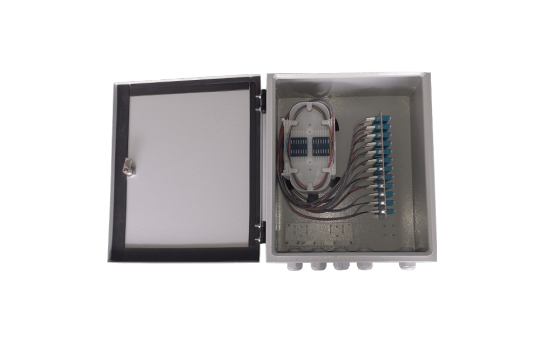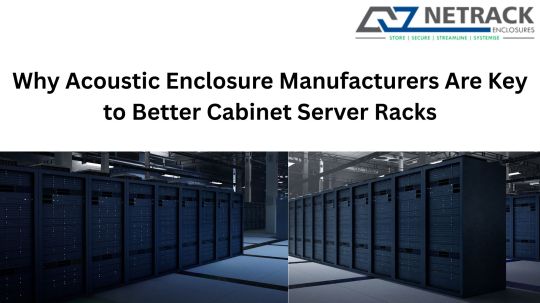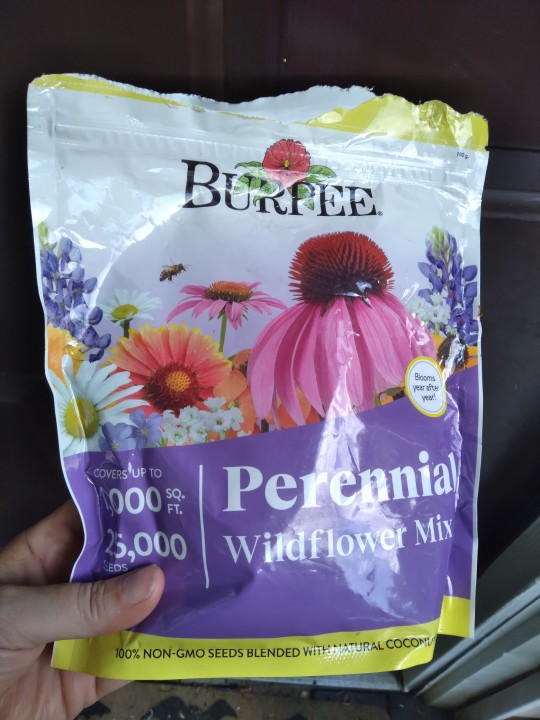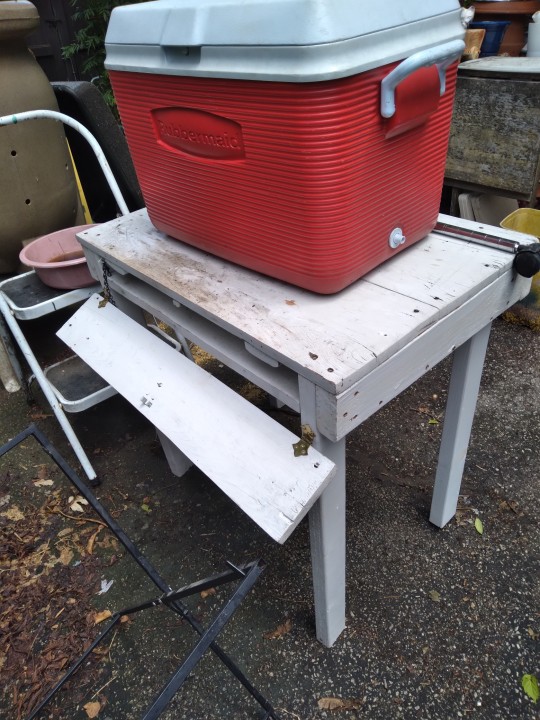#patch panel enclosure
Explore tagged Tumblr posts
Text

96 port wall mount termination box
SPECIFICATIONS:
Material : Mild Steel/Aluminum with 7 Tank Process powder coating.
Dimensions : 350*300*160 mm (H*W*D)
Color : RAL 7035/Black
Weight : 1.8–2 kg
Splice Holder : FR grade ABC.
Splice Holder Dimension : 180*110*15 mm (L*W*H)
Cable Glands : Nylon with nitrile butadiene rubber, cable diameter of 5mm to 14mm max available
Fiber components standard : Telecordia GR 326
Insertion Loss : less <.3dB (Multimode), < .2dB (Singlemode)
Plug/Unplug durability : 1000 times
#storing fiber terminations. It is also used for Indoor/Outdoor application and medium size multi-dwelling units (MDU’s) for FTTx.#Our IP rated wall mount fiber optic patch panel integrates three main functions of fiber splicing#cable winding & storing#and interface management. The enclosure adopts good quality metal sheets & surface electrostatic spray technique#which is offering safety & good endurance performance. It is the ideal design for building & campus networking.#fiber optic product#fiber optics#96 port wall mount termination box
0 notes
Text
Why Acoustic Enclosure Manufacturers Are Key to Better Cabinet Server Racks
The Impact of Noise Control on IT Infrastructure
In modern IT environments, noise management has become a critical factor in both design and daily operations. As server rooms and data centers grow in complexity, the sound levels emitted by active equipment—especially fans and drives—can reach disruptive levels. For organizations that operate in open office layouts or have limited space for dedicated server rooms, this noise poses a unique challenge.
That’s where Acoustic Enclosure Manufacturers provide essential value. These specialists design and produce sound-dampening enclosures that significantly reduce the decibel output from a typical Cabinet Server Rack without compromising airflow or thermal management.

A Closer Look at Cabinet Server Rack Design
The Cabinet Server Rack is the foundation of IT infrastructure for businesses of all sizes. It holds servers, routers, switches, patch panels, and other networking hardware in an organized, secure, and scalable format. While traditional server racks prioritize accessibility and cooling efficiency, they often lack features to contain or reduce operational noise.
As companies seek ways to install Cabinet Server Racks closer to workspaces or in non-dedicated areas, the acoustic shortcomings of standard models become more apparent. In these cases, the demand for quieter solutions continues to rise.
Role of Acoustic Enclosure Manufacturers in IT Innovation
Leading Acoustic Enclosure Manufacturers have stepped up to meet this demand by introducing sophisticated enclosures that integrate soundproofing technology directly into rack systems. These enclosures are engineered using specialized materials—such as acoustic foam, sound-dampening composites, and vibration-isolation mounts—to absorb and reduce noise generated by servers and cooling systems.
The key benefit of working with professional Acoustic Enclosure Manufacturers is the balance they strike between noise reduction and critical performance requirements. Proper airflow, heat dissipation, and accessibility are not sacrificed; instead, they are carefully integrated into the design to ensure that equipment inside the Cabinet Server Rack continues to operate optimally.
Applications in Non-Traditional Environments
As technology expands beyond data centers and IT closets, Cabinet Server Racks are increasingly being placed in retail spaces, classrooms, laboratories, and even office corners. In these locations, the acoustic footprint of IT equipment becomes a primary concern.
Custom enclosures designed by experienced Acoustic Enclosure Manufacturers allow businesses to install powerful servers without disturbing the surrounding environment. These soundproof cabinets help maintain a professional, quiet, and productive workspace, making them an ideal solution for hybrid work environments, remote monitoring setups, or edge computing applications.
Reducing Operational Stress and Enhancing Performance
Noise isn’t just a nuisance—it can also be a contributor to long-term stress and fatigue among IT staff and nearby employees. In high-noise environments, concentration drops and communication becomes more difficult. The integration of noise-reducing technologies directly into the Cabinet Server Rack can therefore enhance not just technical performance but also overall workplace wellbeing.
By partnering with trusted Acoustic Enclosure Manufacturers, organizations are better equipped to deploy their infrastructure in ways that are both practical and comfortable. Whether it's a standalone server in a small office or a bank of racks in a shared workspace, acoustic enclosures bring versatility and peace of mind.
Compatibility and Customization Options
One of the standout advantages offered by top-tier Acoustic Enclosure Manufacturers is the wide range of customization. Every IT environment has unique requirements—from cooling specifications to cable management—and modern acoustic enclosures are designed to accommodate these needs.
The adaptability of soundproof Cabinet Server Racks makes them a worthwhile investment for companies aiming to future-proof their infrastructure. Adjustable rack units, removable panels, and modular sound-dampening features ensure that businesses can scale or modify their setups without replacing the entire system.
#soundproof server rack#soundproof cabinet#silent rack manufacturers#acousti racks manufacturers#soundproof enclosure manufacturers in bangalore
0 notes
Text
Fiber Optic Splice Closures: A Utility Company’s Secret to Rapid Repairs

Utility companies rely on Fiber Optic Splice Closures to deliver fast repairs and maintain stable service. These closures protect sensitive fiber connections from harsh environments. Their robust design supports swift, secure restoration of network function. Quick deployment reduces costly downtime, ensuring reliable communication for customers and critical infrastructure.
Key Takeaways
Fiber optic splice closures protect delicate fiber connections from harsh weather and damage, ensuring stable and reliable network service. Their smart design allows quick access and easy repairs, helping utility companies reduce costly downtime and restore service fast. Using modular, weatherproof closures and following best practices like proper sealing and testing leads to longer-lasting networks and lower maintenance costs.
Fiber Optic Splice Closures: Function, Features, and Importance
What Are Fiber Optic Splice Closures? Fiber optic splice closures serve as protective enclosures for fiber optic cable splices. Utility companies use these closures to shield sensitive fiber connections from environmental hazards such as moisture, dust, and extreme temperatures. Manufacturers construct these closures from high-strength plastics or stainless steel, ensuring durability and waterproof performance. Each closure contains a main body, splice trays for organizing fibers, sealing elements to keep out contaminants, cable glands for secure entry, and mounting brackets for installation. Sealing mechanisms like gels, gaskets, and pull-and-shrink tubing maintain the integrity of the internal splices. This robust construction allows for installation in aerial, underground, and indoor environments, making fiber optic splice closures a versatile solution for network protection. Core Functions: Protection and Organization Fiber optic splice closures play two critical roles in utility networks: protection and organization. They enclose fiber splices in a rugged, sealed housing, preventing damage from water, dust, and mechanical stress. Splice trays inside the closure keep fibers neatly organized, reducing the risk of tangling or breakage. Strain relief hardware secures cables, minimizing stress on the fibers during installation and maintenance. Service loops of excess fiber are stored inside or near the closure, allowing for easier future repairs or upgrades. Different closure types—such as dome, in-line, aerial, and pedestal—support various installation environments and cable entry needs. Proper cable preparation, grounding, and sealing ensure long-term network integrity. Tip: Neat fiber management inside closures, especially dome types, simplifies re-entry and reduces the risk of fiber damage during network modifications. Dowell, a leading provider in the industry, designs fiber optic splice closures that integrate advanced organization features. Their closures often include modular splice trays and patch panel adapters, enhancing both protection and cable management for utility networks. Key Features for Rapid Repairs: Accessibility, Weatherproofing, and Modularity Rapid repairs depend on the accessibility and design of fiber optic splice closures. Compression seal technology and O-ring sealing allow for easy assembly and watertight protection. Many closures require no specialized tools for installation or access, enabling technicians to work efficiently in the field. Mid-access designs let installers add closures over existing cables with minimal disturbance. Hinged splice trays, unibody storage baskets, and removable components improve access to spliced fibers, reducing repair time. Weatherproofing stands as a crucial feature. Closures use durable outer shells, elastic rubber rings, and dome-shaped designs to protect against rain, snow, UV radiation, and physical damage. These features ensure that fiber connections remain intact and functional, even in harsh conditions. Industry standards such as IEC 61753 and IP68 ratings confirm their ability to withstand water, dust, and temperature extremes. Modularity further accelerates repairs and upgrades. Modular closures support a wide range of fiber capacities and allow independent work on individual components. This design simplifies installation, maintenance, and network expansion. Dowell’s modular closures, for example, enable easy assembly, scalability, and compatibility with existing systems, making them a preferred choice for utility companies seeking efficient network management. Why Speed Matters: Impact of Downtime and Need for Fast Response Network downtime can have a severe financial impact on utility companies. According to the ITIC 2024 Hourly Cost of Downtime survey, large enterprises in the utilities sector face average downtime costs exceeding $5 million per hour. This high cost highlights the importance of rapid response and efficient repairs. Fiber optic splice closures help minimize downtime by enabling quick access and streamlined repairs. Accessibility features—such as re-enterable housings, numbered port layouts, and easy-to-use connectors—reduce the complexity and duration of fieldwork. These closures also support fast troubleshooting and maintenance, even in challenging environments like aerial or underground installations. Note: Fast, reliable repairs not only save money but also ensure continuous service for critical infrastructure and customers. By choosing advanced fiber optic splice closures from trusted suppliers like Dowell, utility companies can maintain high network reliability, reduce repair times, and protect their bottom line.
Fiber Optic Splice Closures in Utility Operations

Real-World Scenarios: Emergency Repairs and Outage Response Utility companies often face emergencies that threaten network stability. The Matanuska Telephone Association (MTA) in Alaska provides a notable example. After a 7.1 magnitude earthquake, MTA used fiber optic splice closures as part of its emergency restoration plan. These closures enabled rapid repairs for both aerial and underground cables. Proper sealing prevented water ingress and fiber stress, while OTDR testing verified restoration quality. This approach minimized network damage and restored service quickly. Compared to alternatives, breathable closures offer fast installation—typically within 45 minutes—and cost-effective protection for fusion splices. Their design reduces labor and speeds up outage response, making them ideal for urgent repairs. Choosing the Right Fiber Optic Splice Closure: Durability, Capacity, and Compatibility Selecting the right closure ensures long-term network reliability. Utility companies evaluate durability by choosing closures made from engineering plastics like ABS or PC, or high-strength aluminum alloy for outdoor use. These materials resist corrosion, aging, and impact. Sealing materials such as rubber and silicone provide waterproof and dustproof protection. Compliance with GR-771-CORE standards confirms environmental durability. Capacity and compatibility also matter. Closures must accommodate the required number of fibers and support various cable types and splicing methods. The table below compares two common closure types: Closure Type Fiber Capacity Ideal Applications Advantages Limitations Horizontal (In-Line) Up to 576 Aerial, underground High density, linear layout Needs more space Vertical (Dome) Up to 288 Pole-mounted, subsurface Compact, water-deflecting design Lower capacity than in-line Dowell offers closures that meet these criteria, ensuring compatibility and durability for diverse utility networks. Best Practices for Fast Deployment and Maintenance Efficient deployment starts with careful planning and site surveys. Technicians prepare cables, perform fusion splicing, and organize fibers in trays. Proper sealing with heat-shrink tubing or gel technology ensures environmental protection. OTDR testing verifies splice quality. Regular inspections and cleaning prevent contamination and maintain performance. Technician training, such as hands-on emergency restoration courses, reduces errors and speeds up repairs. Dowell supports these best practices by providing modular, user-friendly closures that simplify installation and maintenance. Fiber Optic Splice Closures help utility companies minimize downtime and maintain reliable service. These closures feature modular designs, advanced weatherproofing, and high splice capacity, which support rapid, effective repairs. Advanced Feature Benefit for Utilities Modular Design Faster repairs and easier upgrades Improved Sealing Fewer outages from environmental damage Utility companies that follow best practices report lower maintenance costs and longer closure lifespans.
FAQ
What is the typical lifespan of a fiber optic splice closure? Most closures last 20 years or more. Manufacturers design them to withstand harsh weather, UV exposure, and physical stress. Can technicians re-enter a closure for future repairs or upgrades? Yes. Many closures feature re-enterable designs. Technicians can open them for maintenance, upgrades, or troubleshooting without damaging the internal fibers. How do utility companies test the integrity of a splice closure after installation? Technicians use OTDR (Optical Time Domain Reflectometer) testing. This tool checks for signal loss, confirming proper splicing and sealing. By: Eric Tel: +86 574 27877377 Mb: +86 13857874858 E-mail: [email protected] Youtube: DOWELL Pinterest: DOWELL Facebook: DOWELL Linkedin: DOWELL Read the full article
0 notes
Text
Smart Cabling for Smart Cities: Understanding Structured Cabling in ELV

The foundation of this digital revolution is literally beneath the surface as cities all over the world continue to develop into smart cities. Structured cabling is a very well-organized system of cables that are concealed in underground conduits, walls, and ceilings. Structured cabling is essential for creating intelligent, connected, and effective urban environments, particularly in ELV (Extra-Low Voltage) systems. Structured cabling in ELV solutions contributes silently but significantly to the development of smart cities, from data transmission and communication to building automation and security systems.
This blog post will explain structured cabling, its role in ELV systems, and why smart city success depends on it.
Structured Cabling: What Is It?

A standardized system of cabling and related hardware that supports several hardware applications in a building or campus is known as structured cabling. Structured cabling, as opposed to point-to-point wiring, makes use of a central hub and a neat layout that makes maintenance, troubleshooting, and future upgrades easier.
Typical components of structured cabling include:
Horizontal cabling (from individual outlets to telecommunications rooms)
Connecting telecommunications rooms with backbone cabling
Panels for patches
Systems for managing cables
Shelves and enclosures
In addition to facilitating easy scalability and minimizing disruption during expansion, structured cabling guarantees the smooth transfer of voice, data, and video signals across networks.
ELV: What is it?;

Systems that run on voltages usually lower than 50V AC or 120V DC are referred to as ELV (Extra-Low Voltage). ELV systems in relation to infrastructure and buildings comprise:
Surveillance and CCTV
Alarm systems for fires
Systems for access control
Systems for public address (PA)
Voice and data networks
Systems for Building Management (BMS)
Structured cabling is necessary for dependable data transmission and communication in all of these systems.
The Need for Structured Cabling in ELV for Smart Cities
A lot of data is necessary for smart cities. For effective operation, real-time communication between sensors, equipment, structures, and control centers is crucial. This demand is supported by structured cabling in ELV systems in a number of ways:
1. Dependable Internet Access
Constant data flow is essential to smart cities. Structured cabling reduces data loss and communication failures by ensuring a dependable physical infrastructure. It offers reliable bandwidth for fast data transfer, which is necessary for smart grids, IoT systems, and surveillance.
2. Infrastructure that is Future-Proof
Cities require networks that are flexible as technology advances. Without demolishing walls or replacing the entire network, structured cabling facilitates modular upgrades and the simple integration of new technologies. This adaptability is essential for smart city planning that is prepared for the future.
3. Centralized Monitoring and Control
ELV systems, such as surveillance, access control, and fire alarms, need to talk to centralized systems in a smart city. By effectively connecting these subsystems, structured cabling permits centralized control, quicker reaction times, and more efficient operations.
4. Long-Term Cost Efficiency
The long-term savings in maintenance, scalability, and performance are substantial, even though structured cabling may require a larger initial investment than ad hoc wiring. Operational expenses and downtime are decreased by fewer interruptions and simple troubleshooting.
5. Improved Security and Safety
In contemporary urban settings, safety features like surveillance and fire alarms are crucial. For these systems to function flawlessly, structured cabling offers a steady and interference-free path—essential in emergency situations where communication needs to be dependable and immediate.
Applications of Structured Cabling in Smart Cities
Let’s look at some practical examples of how structured cabling supports smart city functions:
● Smart Traffic Management
Traffic lights, sensors, and surveillance cameras all feed data to a central traffic control room. Structured cabling connects these components, ensuring data is transmitted without delay, enabling real-time traffic decisions and emergency rerouting.
● Smart Buildings
In commercial buildings, structured cabling integrates lighting controls, HVAC systems, fire alarms, and security systems under one centralized BMS. This allows for energy-efficient operation and quicker response to any faults or emergencies.
● Public Safety Systems
ELV systems like public address, emergency call boxes, and surveillance cameras all rely on structured cabling for uninterrupted connectivity. In smart cities, these systems are often linked to the central security command center.
● Smart Healthcare
Hospitals and clinics in smart cities use structured cabling for patient monitoring systems, nurse call systems, and medical data networks, ensuring patient data flows securely and reliably across departments.
Key Components and Standards
To ensure compatibility and performance, structured cabling in ELV systems follows certain standards like:
TIA/EIA-568: Defines commercial building cabling standards.
ISO/IEC 11801: International standard for generic cabling.
BICSI guidelines: Provide best practices for cable layout and management.
Components include:
Category 6/6A/7 Ethernet cables for data
Fiber optic cables for long-distance and high-speed transmission
Patch panels and racks for easy cable management
Cable trays and ducts for physical protection and organization
Best Practices for ELV Structured Cabling in Smart Cities
Plan for Scalability: Design with future expansion in mind.
Follow Standards: Use industry-standard materials and layouts.
Label Everything: Clear labeling simplifies maintenance.
Use Quality Materials: Don’t compromise on cable or connector quality.
Ensure Proper Segregation: Separate power cables from data cables to prevent interference.
Final Thoughts
As we continue building smarter cities, the need for well-organized, future-ready infrastructure becomes increasingly important. Structured cabling in ELV systems is the foundation upon which all smart services operate. Whether it’s a surveillance network monitoring city streets or an intelligent traffic light system adapting to real-time congestion, none of it works without a reliable and scalable cabling structure.
For city planners, builders, and system integrators, investing in professional structured cabling solutions isn't just a technical requirement—it’s a strategic move toward creating efficient, safe, and sustainable smart cities.
Are you building for the future? Make structured cabling a priority in your ELV design and implementation—because a smart city is only as smart as its backbone.
#fire safety#cctv installation#cctv surveillance#access control security tulsa#access control system#cctv installers
0 notes
Text
Choosing the Right IT Enclosure for Small Network Applications
In today’s digital world, managing your network infrastructure efficiently — even on a small scale — is more critical than ever. Whether you’re running a small business, managing a home office, or setting up a branch network, having the right IT enclosure is essential to keeping your equipment organized, secure, and accessible.
What Is an IT Enclosure?
An IT enclosure, often referred to as a network cabinet or server rack, is a protective housing designed to contain and organize IT equipment like switches, routers, patch panels, and sometimes even servers. These enclosures help prevent physical damage, ensure proper airflow for cooling, and reduce clutter, especially in environments with limited space.
Why Choose a 482.6 mm (19") IT Enclosure?
The 482.6 mm (19") form factor is a standard size in networking, making it highly compatible with a wide range of equipment. Compact 19” IT enclosures are perfect for small-scale setups where full-size server racks would be excessive or space-prohibitive. These enclosures are ideal for:
Small offices
Remote sites
Home labs
Retail environments
Wall-Mounted or Floor-Standing: Flexible Installation Options
One of the most valuable features of these compact IT enclosures is their flexible installation. Depending on your available space and network needs, you can choose to mount the enclosure on a wall or place it on the floor:
Wall-mounted enclosures are excellent for saving floor space and keeping equipment safely off the ground. They’re ideal for wiring closets and smaller server rooms.
Floor-standing enclosures offer easier access for larger setups and can often support heavier equipment or future expansion.
Benefits of Using a Compact IT Enclosure
Space-saving design — Perfect for tight or limited spaces
Enhanced equipment protection — Shields devices from dust, tampering, and accidental contact
Improved cable management — Keeps your setup neat and efficient
Efficient cooling — Promotes airflow to prevent overheating
Future scalability — Makes it easy to expand your network when needed
Final Thoughts
Investing in a quality IT enclosure ensures your small network setup runs smoothly, remains protected, and looks professional. With compact 19” enclosures that offer flexible mounting options, you get the ideal balance of accessibility, security, and space-efficiency.
Whether you’re setting up a new network or upgrading an existing one, don’t overlook the importance of a reliable IT enclosure — it’s the backbone of an organized, efficient IT environment.
1 note
·
View note
Text
How Can You Protect a Screened-In Patio From Damage?
A screened-in patio is a great way to enjoy the outdoors without dealing with bugs, debris, or harsh weather. But just like any part of your home, it needs proper care to stay in top shape. Without the right protection, patio enclosures can suffer from wear and tear caused by weather, pets, or general use. Fortunately, there are plenty of ways to maintain your patio and keep it looking great for years.
From weatherproofing strategies to pest prevention and regular maintenance, let’s explore the best ways to protect your screened-in patio from damage.
1. Choose Durable Patio Enclosures for Long-Term Protection
The quality of your patio enclosure plays a big role in how well it withstands the elements. Investing in durable materials is key if you’re considering installing a screened-in patio or upgrading your current one.
Aluminum frames – Strong, rust-resistant, and low-maintenance.
Fiberglass screens – More flexible and durable than traditional aluminum mesh.
Vinyl-coated polyester screens – A great choice for extra durability, especially in high-wind areas.
Tempered glass enclosures – Offer extra protection against harsh weather while maintaining visibility.
A high-quality patio enclosure ensures you won’t have to deal with frequent repairs due to wear and tear.
2. Weatherproof Your Screened-In Patio
Weather can be one of the biggest threats to patio enclosures. Sun, wind, rain, and even snow can take a toll over time. Here’s how you can keep your screened-in patio protected from the elements:
Install wind-resistant screens – Heavy-duty screens can prevent damage during storms and strong winds.
Use waterproof sealants – Applying a sealant to wooden elements helps prevent water damage and rot.
Add retractable covers – A retractable awning or roll-down shades can protect against sun exposure and heavy rain.
Ensure proper drainage – Standing water can weaken the structure, so gutters and drainage systems direct water away from your patio.
These preventive steps will keep your patio enclosure in top condition, regardless of season.
3. Keep Pests and Wildlife Out
One of the best perks of a screened-in patio is enjoying fresh air without dealing with pests. However, small tears or gaps in your screen can invite unwanted visitors. To prevent damage caused by insects, birds, or small animals, follow these tips:
Patch up small holes quickly – Even the tiniest hole can invite bugs inside. Repair any tears before they get worse.
Use pet-resistant screens – Stronger screens can prevent claw damage if you have dogs or cats.
Install door sweeps – This helps block insects and small critters from sneaking in under doors.
Keep food sealed – Store food properly to avoid attracting pests if you eat outside.
A well-maintained patio enclosure ensures your outdoor space remains comfortable and pest-free.
4. Prevent Mold and Mildew Buildup
Humidity and moisture can lead to mold and mildew on patio enclosures, which look unpleasant and can weaken the structure over time. To keep your screened-in patio fresh and mold-free:
Improve ventilation – Keeping air flowing prevents moisture buildup.
Use mildew-resistant paint – This can prevent mold growth if your enclosure has wooden elements.
Clean regularly – Wipe down screens and frames to remove dirt and moisture before mold develops.
Trim nearby plants – Overgrown plants can trap moisture, creating the perfect environment for mold.
You and inviting by staying on top of maintenance. by staying on top of maintenance
5. Protect Your Screens from Pets and Children
You have extra wear and tear if you have pets or kids. If you have pets or kids, Dogs may paw at screens, while kids may accidentally push against them. Here are some ways to add additional protection:
Use reinforced screens – Pet-resistant screens are designed to withstand scratching and jumping.
Add a kick plate – Installing a solid lower panel can prevent damage from feet, paws, or accidental bumps.
Train pets early – Teaching dogs not to scratch at the screens helps prevent unnecessary repairs.
By reinforcing your screened-in patio, you can keep it safe from everyday wear and tear caused by pets and kids.
6. Perform Routine Maintenance for Longevity
A little maintenance goes a long way in extending the life of your patio enclosure. Regular check-ups will help you catch minor issues before they become big problems. Make sure to:
Inspect screens for damage – Look for rips or loose areas that need repairs.
Clean screens and frames: Use a gentle brush or soapy water to Rp.
Check for rust or corrosion – If you have metal frames, ensure they remain rust-free.
Lubricate hinges and tracks – If your patio enclosure has sliding doors, keep them operating smoothly.
Keeping up with simple maintenance will help your screened-in patio stay in great shape for years.
Transform Your Patio with a Screen Mobile
Protecting your screened-in patio doesn’t have to be complicated. With the right materials, weatherproofing, pest prevention, and regular maintenance, you can enjoy a beautiful, functional outdoor space all year.
Want to upgrade or repair your patio enclosure? Visit Screen Mobile of South Bend today to explore custom patio enclosures and screen solutions designed to enhance and protect your outdoor living space!
1 note
·
View note
Text
Wall Mount Racks: The Ideal Solution for Limited IT Space
In today’s fast-paced digital world, managing IT infrastructure efficiently is essential for businesses of all sizes. When space is limited but functionality can't be compromised, wall mount racks emerge as the perfect solution. These compact, sturdy, and smartly designed enclosures offer a space-saving alternative to traditional server racks, making them ideal for small offices, retail stores, home networks, and branch locations.
What Are Wall Mount Racks?
Wall mount racks are specially engineered enclosures that can be securely attached to a wall. Unlike full-size floor-standing racks, they offer a smaller footprint while still providing ample room to house networking equipment such as patch panels, switches, routers, and even small servers. Available in open-frame or enclosed cabinet designs, wall mount racks ensure that your IT hardware is safely housed without occupying valuable floor space.
Ideal for Compact and Efficient IT Setups
One of the key advantages of wall mount racks is their ability to maximize vertical space. When floor space is limited, utilizing wall area is a smart move. Wall-mounted racks allow businesses to maintain a professional, organized environment without cluttering the workspace. This is particularly beneficial for startups, coworking spaces, or remote locations where full-size server racks may be impractical.
Enhanced Security and Cable Management
Wall mount racks come equipped with features like lockable doors and side panels, helping to secure sensitive equipment from unauthorized access. Many models also offer built-in cable management systems, ensuring neat routing of power and network cables. This not only improves airflow and reduces overheating risks but also simplifies maintenance and troubleshooting.
Easy Installation and Accessibility
Another reason wall mount racks are gaining popularity is their easy installation and convenient access. Most models are designed with swing-out or removable panels, allowing technicians to reach cables and components without dismantling the entire setup. This streamlined design reduces downtime and improves overall IT efficiency.
A Cost-Effective IT Infrastructure Solution
Wall mount racks offer a cost-effective alternative to large server racks. They require less physical space, reduced cooling needs, and minimal installation resources. For businesses on a tight budget, wall mount racks provide an economical way to organize and protect networking hardware without compromising on performance or safety.
Conclusion
Whether you're managing a growing home office or expanding your business into smaller locations, wall mount racks provide an excellent solution to space constraints. They are secure, efficient, easy to install, and designed to meet the demands of modern IT setups. By optimizing your available space, wall mount racks ensure that your network infrastructure remains organized, accessible, and protected — no matter how limited your space may be.
0 notes
Text

Very pretty partridge pea/sensitive plant flowering in the alley when going to pick up chicken food. I'm hoping that I remember to grab some seed pods from it when available to grow next year.


Several alley scavenging finds on my way to and from the pickup. First this mostly full bag of wildflower seed packed for this year. I'll be tucking it away to use next spring in the front in-ground bed. I figure there will be reseeding borage and cornflower and cosmos already, so this will just add some variety.

Also found this simple desk made from solid wood (planks and 2x4s). The only issue is front panel has a cabinet catch but it doesn't stay up. But that doesn't matter because I'm going to remove it to steal the hinges for my raised bed enclosure doors. Well, one of them (out of eight). Slowly but surely I will get that done.
The cooler is also new (great interior, just missing the drain cap) as well as the black folding metal thing that I think held a tray? I'm just going to put a board on top and put it on the porch to hold some potted plants.
Not pictured is a 2x3' corkboard in reasonable shape that I'm going to cover in fabric and stick in the kitchen (I'd been wanting something to tack little clipped recipes to). Also a 3' section of exterior grade 2x12 that i'll be using to fix a portion of the raised bed that's being enclosed (one of the bottom boards on the side facing the neighbor's yard has popped out, likely due to rot as the thing is over 15 years old).
More summer flowers, but in my yard this time:

First flower of the perennial pea vine.

First zinnia in the stepping stone path of the planting bed in front.

The crepe myrtle next to the front steps is just starting to bloom.

Common daylilies in the patch of the side yard that gets the most sun, mostly in the morning.

Lemon bergamot that I transplanted into the sidewalk bed is starting to bloom. It will keep going into the fall and feed a lot of butterflies.

And finally blossoms from some Chinese broccoli that didn't get a chance to size up before the weather turned and it bolted. That's okay, I'll just grab some seed from it and then the chickens can enjoy the rest.
#free stuff#scavenging in the alley#i'm going to stick that desk in the garage for now until the microwave cart i've been using as an outdoor work station finally falls apart#then it can replace it#coolers with drains like this one make good planters but this one is in good enough shape to be worth fixing#wildflowers#even if nothing comes up from that mix it will still add to the soil thanks to the coconut coir filler#summer garden flowers
1 note
·
View note
Text
🌱 Eco-Friendly Sanctuaries: Leading the Way in Sustainable Animal Care
In a world where climate change, habitat loss, and pollution are pressing threats to animals, the role of sanctuaries has expanded far beyond rescue. Today’s most forward-thinking animal sanctuaries aren’t just offering safe spaces—they’re pioneering sustainable, eco-conscious models of care that protect animals and the planet.
From green energy to organic farming and water recycling, these sanctuaries are proving that compassion for animals and environmental responsibility go hand in hand.
🔋 1. Harnessing Green Energy to Power Kindness
Electricity use in sanctuaries is no small concern—enclosures, veterinary units, and rescue operations demand energy. But forward-looking sanctuaries like Vantara are making the shift to solar and wind power.
Solar panels light up pathways, power water pumps, and run essential medical equipment
Battery storage systems ensure 24/7 electricity without harming the environment
Biogas plants recycle animal waste into usable energy for kitchens or lighting
This shift not only reduces carbon emissions—it also teaches communities that renewable energy and rural development are compatible.
💧 2. Water Recycling and Rainwater Harvesting: Every Drop Counts
Water is life—for animals, plants, and sanctuary operations. Especially during Indian summers and monsoons, water management becomes a pillar of sustainable care.
Sanctuaries are using:
Rainwater harvesting tanks to collect and store seasonal rains
Greywater systems to recycle water from sinks and showers for gardening or cleaning
Natural filtration ponds that purify water without chemicals, safe for birds and aquatic life
This not only secures clean water for animals but also reduces dependence on strained municipal or borewell sources.
🌾 3. Organic Farming for Animal Feed and Self-Reliance
Some sanctuaries go a step further by growing their own organic fodder and produce. This reduces their carbon footprint and ensures that animals receive chemical-free, nutrient-rich diets.
Vantara integrates organic vegetable gardens, medicinal plant patches, and fodder fields that serve both rescued animals and human staff.
Pesticide-free herbs like neem, tulsi, and lemongrass are used in natural pest control and as part of veterinary care.
These micro-farms support soil health, biodiversity, and food autonomy—essential values for ethical animal care.
🌳 4. Sustainable Construction: Building with the Earth in Mind
Modern sanctuaries are moving away from concrete and toward eco-conscious building materials like:
Mud-brick shelters
Thatch roofing
Stone-lined water troughs
Bamboo fencing
These materials regulate temperature naturally, reduce heat during summers, and create low-impact habitats that blend with the environment.
They also promote traditional building techniques, supporting local economies and craftspeople.
🐾 5. Ethical Waste Management and Composting
With hundreds of animals, waste is inevitable—but waste doesn’t have to be a problem. Sanctuaries are implementing:
Compost pits for food and plant waste, which return nutrients to the soil
Animal manure as organic fertilizer for crops
Waste segregation systems to reduce landfill contributions
This closes the loop and makes the sanctuary a living example of a zero-waste ecosystem.
🌍 Leading By Example: Why This Matters
Sanctuaries are not just spaces of recovery—they’re role models for ethical living. When these organizations commit to green practices, they send a powerful message:
We can protect animals without harming the planet.
They educate local communities, inspire visiting schoolchildren, and influence policymakers. By operating sustainably, sanctuaries become living proof that compassion and conservation can thrive together.
💚 Final Thought: Sanctuary for All Life
The most powerful sanctuaries don’t just rescue animals—they restore balance. To the land. To the water. To the way we think about care.
From Vantara’s solar-powered clinics to Peepal Farm’s organic compost gardens, India’s eco-friendly sanctuaries are leading the way toward a future where sustainability is not optional—it’s the standard.
And in that future, every animal, every tree, and every human finds sanctuary.
0 notes
Text

48 port wall mount termination box
SPECIFICATIONS:
Material : Mild Steel/Aluminum with 7 Tank Process powder coating.
Dimensions : 350*300*110 mm (H*W*D)
Color : RAL 7035/Black
Weight : 1.8–2 kg
Splice Holder : FR grade ABC.
Splice Holder Dimension : 180*110*15 mm (L*W*H)
Cable Glands : Nylon with nitrile butadiene rubber, cable diameter of 5mm to 14mm max available
Fiber components standard : Telecordia GR 326
Insertion Loss : less <.3dB (Multimode), < .2dB (Singlemode)
Plug/Unplug durability : 1000 times
#storing fiber terminations. It is also used for Indoor/Outdoor application and medium size multi-dwelling units (MDU’s) for FTTx.#Our IP rated wall mount fiber optic patch panel integrates three main functions of fiber splicing#cable winding & storing#and interface management. The enclosure adopts good quality metal sheets & surface electrostatic spray technique#which is offering safety & good endurance performance. It is the ideal design for building & campus networking.#48 port wall mount patch panel#terminator#cable#fiber optic#fiber optic product
0 notes
Text
High-Performance PLC Splitters by Nextik: Optimizing Fiber Optic Networks
PLC Splitters | PLC Splitters Suppliers| PLC Splitters Manufacturer
In today's data-driven world, a strong and reliable fiber optic infrastructure is critical for efficient communication. At the center of this infrastructure is the PLC Splitter, a passive optical device that splits optical signals without impacting signal integrity. Nextik, an established name in fiber optic systems, offers a wide selection of PLC splitters to satisfy the changing demands of modern networks, from urban FTTH deployments to large-scale telecom applications.
What is a PLC Splitter?
A PLC (Planar Lightwave Circuit) Splitter is a critical component of fiber optic networks. It equally distributes or divides a single optical signal into many outputs. PLC splitters are designed using modern silicon glass wavelength technology to provide limited insertion loss and great reliability, making them suitable for both central and distributed optical networks.
Compared to typical FBT (Fused Biconical Taper) splitters, PLC splitters have more constant splitting ratios and function better across a broader variety of wavelengths, making them ideal for high-speed, high-capacity systems.
Why Choose Nextik for Your PLC Splitter Needs?
Nextik is a leading PLC splitter manufacturer and supplier in India, providing high-performance solutions designed to customer-specific applications. Nextik's manufacturing experience, tight quality control, and customer-first attitude ensure that you obtain long-lasting, high-precision PLC splitters for any deployment.
Key Benefits of Nextik PLC Splitters:
High Network Capacity: Engineered for demanding network environments, ensuring high bandwidth support.
Low Failure Rate: Built with top-grade materials and tested under extreme conditions.
Excellent Environmental Stability: Consistent performance in diverse weather and temperature variations.
Compact Design: Easy installation in tight or complex network environments.
Low Insertion Loss and Uniform Splitting: Ensures optimal performance across all outputs.
Types of PLC Splitters Offered by Nextik
To meet the wide range of fiber optic applications, Nextik offers various configurations and packaging types. These include:
1. Bare Fiber PLC Splitter
Bare fiber splitters are basic, unprotected versions of PLC splitters that are ideal for integration into larger assemblies. They are lightweight and compact, suitable for use inside fiber distribution units or customized enclosures.
2. ABS Box Type PLC Splitter
Encased in an ABS plastic box, this type of splitter offers enhanced protection against physical and environmental impacts. It is perfect for both indoor and outdoor installations and can be easily mounted in optical distribution boxes or cabinets.
3. Fan-Out Fiber PLC Splitter
Fan-out splitters include connectors on the output fibers, allowing easy connection to other components. This configuration is widely used in FTTH and PON systems due to its convenience and quick deployment.
4. 1U 19-Inch Rack-Mount PLC Splitter
This rack-mounted splitter is designed for standard 19-inch racks and offers a neat and professional appearance. Ideal for central offices or network operation centers, it supports easy management and high-density installations.
5. Cassette or Card Type PLC Splitter
Cassette splitters are compact and modular, designed for integration into fiber patch panels or optical distribution frames (ODFs). They offer high performance and ease of handling in structured cabling environments.
Applications of PLC Splitters
Nextik’s PLC Splitters serve multiple industries and network architectures. They play a vital role in:
FTTH (Fiber to the Home): Distributes optical signals from a central office to multiple homes with high reliability and minimal loss.
Passive Optical Networks (PON): Widely used in GPON and EPON systems to connect Optical Line Terminals (OLT) to multiple Optical Network Units (ONU).
CATV (Cable Television): Ensures the even distribution of optical signals to multiple TV subscribers.
Data Centers and Enterprise Networks: Supports high-capacity, low-latency data transmission across large networks.
Security and Surveillance Systems: Maintains consistent video signal quality across multiple cameras and monitoring points.
Quality Assurance and Testing
Every PLC Splitter from Nextik undergoes rigorous testing procedures to ensure compliance with international standards. Quality assurance processes include:
Optical performance testing for insertion loss, return loss, and uniformity.
Environmental testing to simulate harsh conditions including humidity, temperature fluctuation, and vibration.
Mechanical testing to assess durability during handling and installation.
These strict protocols guarantee that Nextik PLC splitters perform reliably in real-world environments.
Customization and Flexibility
Nextik offers custom splitter configurations to meet specific network requirements. Whether you need different fiber lengths, connector types (SC, LC, FC, etc.), or customized packaging, Nextik can deliver solutions tailored to your infrastructure needs.
Available splitter ratios include standard options such as 1x2, 1x4, 1x8, 1x16, 1x32, and 1x64, as well as 2xN configurations for advanced applications.
Why Network Professionals Trust Nextik
Expert Engineering: Experienced professionals with in-depth knowledge of fiber optics.
Reliable Supply Chain: Quick turnaround times and dependable delivery.
Affordable Pricing: Competitive rates without compromising quality.
Post-Sales Support: Comprehensive customer assistance to ensure satisfaction and product performance.
Serving India and Beyond
Based in Noida, India, Nextik supplies PLC splitters across the country and to global markets. As a preferred choice for telecom companies, system integrators, and government projects, Nextik’s commitment to innovation and quality ensures its continued leadership in fiber optic technology.
Conclusion
As fiber optic networks expand, the value of high-quality components such as the PLC Splitter cannot be overstated. Nextik provides the performance, stamina, and flexibility required for a city-wide FTTH network or an upgrade to a corporate data infrastructure. Nextik is your one-stop shop for PLC splitters, offering a wide selection of options, affordable prices, and dependable customer service. Experience the difference of working with a reliable fiber optic partner who is dedicated to excellence. Book now
0 notes
Text
The Role of Patch Panels in Structured Cabling: Why They Matter for Network Efficiency
When setting up a strong and reliable network, structured cabling is a key part of the plan. One important device in structured cabling that often gets overlooked is the patch panel. Although it may look simple, a patch panel plays a big role in organizing and managing network cables efficiently.
What Is a Patch Panel?
A patch panel is a flat panel that houses multiple network ports. It's typically mounted on a wall or in a server rack. These ports allow you to connect different cables from computers, servers, and switches to one central place. Patch panels come in various types, including Cat5e, Cat6, and fiber optic panels.
How Patch Panels Work in Structured Cabling
Patch panels act as a central hub for your network connections. Instead of running long cables directly to every device, the patch panel helps you organize shorter cables that connect to a switch. This setup not only looks cleaner but also makes it easier to manage and troubleshoot connections.
Benefits of Using Patch Panels
Using patch panels in your structured cabling setup offers many advantages:
Easy Maintenance: If there's an issue, you can quickly check and fix a single cable.
Clean and Organized Setup: No messy cables running across the room.
Flexibility: You can easily change or add connections without rewiring everything.
Time-Saving: Quick identification and resolution of problems reduce downtime.
Future-Proofing: Adding new devices to your network becomes much easier.
Patch Panels vs Direct Cable Connections
Some may think it’s faster to connect devices directly to switches without a patch panel. While this may work short-term, it creates a messy, confusing setup in the long run. A patch panel allows for better structure, making your system more scalable and easier to manage.
Best Practices for Installing Patch Panels
To get the most out of your patch panel:
Label Every Cable: This helps you identify connections quickly.
Use Color Coding: For better cable organization.
Allow Some Slack: Leave extra cable length for future changes.
Mount Securely: Keep everything neat and safe using racks or enclosures.
Patch Panels in UAE Workspaces
In a busy business hub like the UAE, reliable and scalable network systems are crucial. Offices, IT firms, warehouses, and commercial spaces rely on structured cabling to stay connected. Using patch panels ensures that your setup stays clean, efficient, and ready for growth.
At Time Vision, we provide expert structured cabling installation In Dubai across the UAE. Our services include fiber cabling, data point setup, and patch panel installation—ensuring your network stays organized and future-ready.
Conclusion
Patch panels may seem like a small part of your network, but they bring big benefits. They help manage cables, reduce downtime, and prepare your system for future changes. If you're building or upgrading your network, don’t ignore the value of a properly installed patch panel. It’s the smart step toward long-term efficiency.
1 note
·
View note
Text
Spring Break – BreakCore Music Player
Final Project
For my final project in physical computing, I designed and built a digital musical instrument that I call the Spring Break – BreakCore Music Player. Drawing inspiration from the New Interfaces for Musical Expression (NIME) movement, this instrument transforms hand gestures into musical actions, allowing me to perform and manipulate breakcore-style audio using two ultrasonic distance sensors connected to an Arduino and mapped into Max MSP. It’s a controller, a performance tool, and a kind of interactive sculpture all in one—and it really made me feel like I was DJing a rave set with my hands.


The original concept came together as I experimented with the HC-SR04 distance sensors. I had initially planned to use motion sensors, but they proved too difficult to wire. After talking with someone more experienced, I pivoted to ultrasonic sensors since they offer similar spatial sensing but with more reliable outputs. Once I got one sensor working, I saw how smoothly it could translate distance into digital signals, so I added a second. This two-sensor setup let me build a kind of “on/off” control system, where each hand movement could start or stop specific layers of music.




The physical design of the instrument was simple but meaningful. I laser cut a small enclosure using MakerCase and acrylic in the Spelman Innovation Lab, and decorated it with a guitar-shaped design on the front panel to visually signal its purpose as a musical object. Inside the box, I mounted the Arduino and wired both sensors to a single breadboard—something I hadn’t done before, but it worked flawlessly on the first try. The sensors were positioned facing upward so I could hover my hands over them during the performance.


Left: Arduino Code for first sample, Right: Testing first sample
The Arduino code handled the distance calculations and serial output. Each sensor was triggered in the loop, calculating the distance in centimeters and printing both values as a single line of data. Here's the exact code I used:
const int trigPins[2] = {9, 11};
const int echoPins[2] = {10, 12};
float distances[2];
long duration;
void setup() {
Serial.begin(9600);
for (int i = 0; i < 2; i++) {
pinMode(trigPins[i], OUTPUT);
pinMode(echoPins[i], INPUT);
}
}
void loop() {
for (int i = 0; i < 2; i++) {
// Trigger pulse
digitalWrite(trigPins[i], LOW);
delayMicroseconds(2);
digitalWrite(trigPins[i], HIGH);
delayMicroseconds(10);
digitalWrite(trigPins[i], LOW);
// Read pulse
duration = pulseIn(echoPins[i], HIGH, 30000); // timeout safety
distances[i] = (duration * 0.0343) / 2;
// If no signal, set to 0
if (duration == 0) distances[i] = 0;
// Print to serial
Serial.print(distances[i]);
Serial.print(" ");
}
Serial.println(); // New line
delay(100);
}
In Max MSP, I created a patch that received the serial data from the Arduino, unpacked it, and used simple conditional logic to check whether the hand was within a certain threshold distance—specifically 20 centimeters. If so, it sent a bang that triggered a set of audio samples. Each sensor was mapped to a different set of three layered breakcore audio loops. Here’s the final version of the patch:

The left and right sides of the patch represent each of the sensors. When a hand is detected within range, it activates all three samples on that side, creating a stacked, textured sound. I didn’t map pitch or volume directly, but the threshold-based triggering gave me solid, real-time control over the performance. The layering of audio and the fast, cut-up loops created that signature breakcore energy I was going for.
When it came time to compose a piece, I built my sound palette from breakcore-inspired loops and samples I either made or found online. The genre naturally lends itself to this kind of chaotic, reactive interaction. Once I tested the first drum loop with my hand and saw it activate in sync with my movement, I knew exactly what direction to go. My final piece was more of an improvised jam session than a strict composition, but that made it feel alive—and I genuinely felt like I was DJing with air gestures.
This project wasn’t easy. Learning Max MSP from scratch was a major challenge. The interface is not beginner-friendly, and figuring out how to parse serial data, unpack values, and link it to audio playback took a lot of trial and error. I also ran into a brief issue where one of my sensors wasn’t showing up in the serial monitor, which I eventually solved by testing it in a separate sketch and reconnecting the wiring. Another challenge was figuring out how to keep the whole build compact—I’d used two breadboards in my midterm, but I managed to wire both sensors on one board for this project, which helped with space and structure.
If I had more time, I’d love to build on this project by introducing more nuanced sound control. Maybe mapping pitch to distance, adding a third sensor for tempo control, or even building a visual interface with responsive lights or projections. I can definitely imagine this evolving into a fully-fledged digital instrument or live performance tool.
More than anything, this project taught me that I can make music with my hands—literally. I now understand how to translate gesture into sound, how to route sensor data into an audio environment like Max MSP, and how to create systems that feel playful and expressive. I walked into this project nervous about how much I didn’t know, and I came out of it with a finished, functional instrument that let me perform a genre I love. That’s something I’ll carry with me well beyond this class.
S.O to the Spelman Innovation Lab, the IL staff and Professor Holmes- I couldn’t have don’t this without you!
xx
0 notes
Text
Price: [price_with_discount] (as of [price_update_date] - Details) [ad_1] Padmansh is a name in furnishing industry and We provide solutions to various domestic needs. We bring you the all-new range of led tv covers to keep one of the most important home appliances safe and new for years to come. Our led tv covers are 100 % dust proof which will prevent the LED parts from unnecessary dust particles, because dust particles can destroy the control panel of the led. Padmansh LED tv cover is the perfect insurance that your Box of entertainment can have, made from high quality transparent PVC material which doesn't affect the visuals a bit, Zipper encloser and Velcro patches make it easy to operate, Helps in protection from dust, stains and water. It helps you to keep your led tv safe and secure from scratches, stain, dust and other particles. It comes with zip enclosure & Velcro patches feature which helps you to install it without detaching your tv from the hanger. 100% dustproof which will extend life of your product as it restricts the dust, and other particles to accumulate over the electronic circuits. The Zipper mechanism helps in easy on and off process. The led can be used without removing the complete cover. TV cover 32-inch Dimensions WxHxD 29x19x3 inches, the screen size is measured diagonally and it is suitable for all 32 inches LED, LCD & Plasma TVs The Cover is made from PVC material, and made as per the dimensions of the specific size. It comes with zip enclosure & Velcro patches feature which helps you to install it without detaching your tv from the hanger It provides the extended life to your product as it restricts the dust, and other particles to accumulate over the electronic circuits. [ad_2]
0 notes
Text
Common Maintenance Mistakes That Can Damage Your Patio Enclosure
Your patio enclosure is more than just an outdoor extension of your home—it’s a place to relax, entertain, and enjoy nature while staying protected from the elements. However, without proper care, even the best-designed patio enclosures can deteriorate over time. Regular maintenance helps preserve your enclosure’s durability and aesthetic appeal, but small missteps can lead to costly damage.
To help you keep your patio enclosure in top shape, let’s go over some common maintenance mistakes and how to avoid them.
1. Neglecting Routine Cleaning
Dirt, pollen, and moisture can accumulate on your patio enclosure, leading to stains, mold growth, and material degradation. Many people make the mistake of cleaning too infrequently or using the wrong cleaning products.
How to Avoid This Mistake:
Clean your patio enclosure at least once a month using mild soap and water.
Avoid harsh chemicals that can weaken metal frames, scratch glass, or degrade screens.
Use a soft brush or microfiber cloth to prevent damage while scrubbing.
2. Ignoring Small Repairs
Small cracks, loose screens, or minor leaks may not seem urgent, but ignoring them can lead to bigger structural problems. Even a small tear in the screen or a loose panel can worsen over time due to weather conditions.
How to Avoid This Mistake:
Inspect your patio enclosure regularly for any signs of wear and tear.
Address minor damages promptly to prevent them from turning into costly repairs.
Keep a repair kit handy with sealants, replacement screws, and screen patches.
3. Using the Wrong Cleaning Tools
It’s easy to assume that a pressure washer or rough scrubbing pad will make cleaning faster, but these tools can do more harm than good. Excessive force can damage delicate screens, weaken seals, and even cause cracks in glass panels.
How to Avoid This Mistake:
Stick to gentle cleaning methods, using a soft sponge or low-pressure hose.
If you must use a pressure washer, keep it on the lowest setting and maintain a safe distance.
Always test cleaning products on a small area before applying them to the entire enclosure.
4. Allowing Water to Pool Around the Structure
Improper drainage around your patio enclosure can lead to water damage, mold growth, and even structural weakening. Standing water can also attract pests and accelerate material deterioration.
How to Avoid This Mistake:
Ensure your patio has proper drainage to prevent water buildup.
Check gutters and downspouts regularly to direct rainwater away from the structure.
Consider installing a slight slope or using pavers to improve runoff.
5. Skipping Seasonal Maintenance
Many people focus on their patio enclosures during warmer months but forget about seasonal upkeep. Cold weather, heavy rain, and strong winds can cause unexpected damage if the structure isn’t properly maintained throughout the year.
How to Avoid This Mistake:
Perform seasonal maintenance, such as sealing cracks before winter or inspecting screens after stormy weather.
Cover or secure outdoor furniture to prevent impact damage during high winds.
Check for rust or corrosion on metal components and treat them before they worsen.
6. Using Abrasive or Incorrect Cleaning Solutions
Not all cleaning solutions are safe for patio enclosures. Harsh chemicals can damage glass panels, corrode metal frames, or discolor screens over time.
How to Avoid This Mistake:
Stick to manufacturer-recommended cleaning products.
Use a mixture of mild dish soap and warm water for most surfaces.
Avoid ammonia-based cleaners on glass, as they can cause streaking and discoloration.
7. Overlooking Pest Prevention
A patio enclosure provides a comfortable outdoor space, but without proper pest control, insects, rodents, and birds can create problems. Unsealed gaps, unattended spills, or poor maintenance can invite unwanted critters.
How to Avoid This Mistake:
Seal any small openings to prevent pests from entering.
Regularly clean food crumbs and spills that might attract insects.
Use natural pest deterrents like citronella candles or screen-safe sprays.
8. Not Checking for Structural Weaknesses
Over time, exposure to the elements can weaken certain parts of your patio enclosure, especially if it’s made of wood, aluminum, or vinyl. Loose screws, deteriorating seals, and warping materials can lead to bigger issues down the line.
How to Avoid This Mistake:
Perform regular structural inspections to identify weak points.
Tighten screws and bolts as needed to keep the frame stable.
Replace worn-out or damaged components before they compromise the entire structure.
9. Ignoring UV Protection
While patio enclosures provide shade and protection, prolonged sun exposure can still cause materials to fade, weaken, or warp. Many people don’t consider UV protection when maintaining their enclosure, leading to premature wear.
How to Avoid This Mistake:
Apply UV-protective coatings to glass or polycarbonate panels.
Use UV-resistant materials when installing new screens or covers.
Consider adding retractable shades for extra sun protection.
10. Failing to Secure Your Enclosure in Extreme Weather
Strong winds, heavy storms, and extreme weather conditions can put stress on your patio enclosure. If not properly secured, panels and screens may loosen or detach completely.
How to Avoid This Mistake:
Secure loose parts and reinforce weak points before extreme weather hits.
If possible, retract motorized enclosures or remove lightweight screens in areas prone to storms.
Inspect for damage after severe weather to address any issues immediately.
Conclusion
Maintaining your patio enclosure doesn’t have to be complicated, but avoiding these common mistakes will help extend its lifespan and keep it in great shape for years to come. A little preventive care goes a long way in preserving your outdoor retreat.
Ready to enhance your patio enclosure with expert solutions? Visit Screen Mobile of South Bend today to explore custom patio enclosures and outdoor/indoor screen solutions that perfectly fit your home. Let’s create a space that’s built to last!
1 note
·
View note